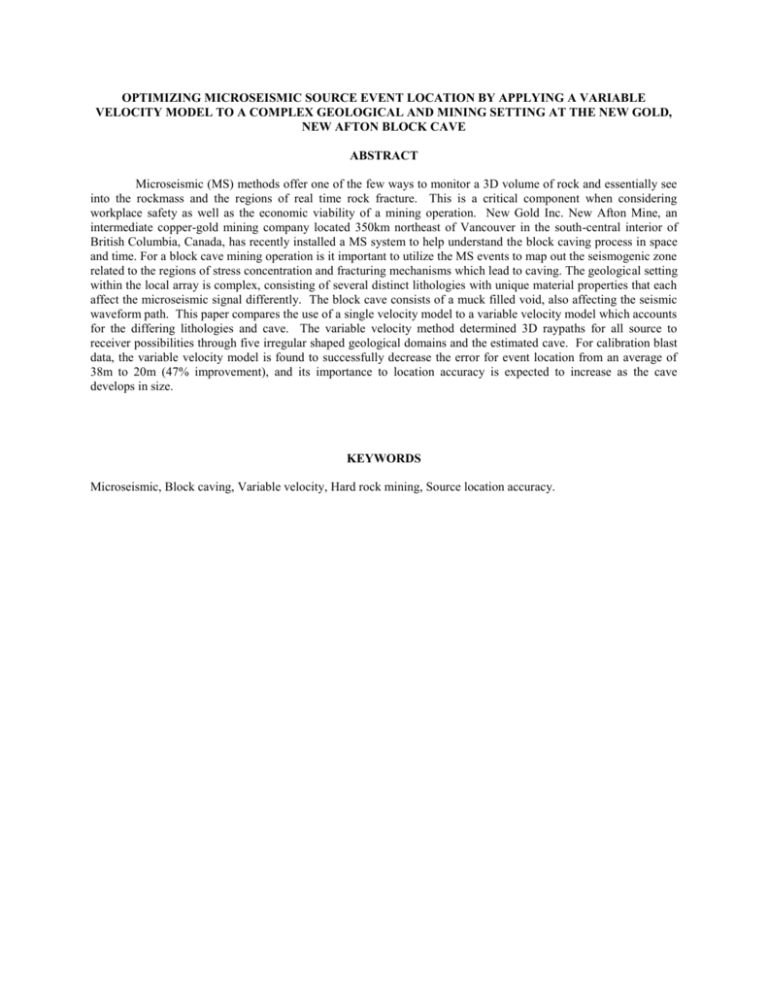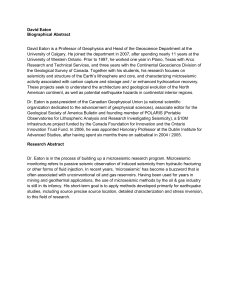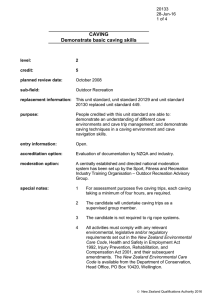Click here - The Gibson Group
advertisement

OPTIMIZING MICROSEISMIC SOURCE EVENT LOCATION BY APPLYING A VARIABLE VELOCITY MODEL TO A COMPLEX GEOLOGICAL AND MINING SETTING AT THE NEW GOLD, NEW AFTON BLOCK CAVE ABSTRACT Microseismic (MS) methods offer one of the few ways to monitor a 3D volume of rock and essentially see into the rockmass and the regions of real time rock fracture. This is a critical component when considering workplace safety as well as the economic viability of a mining operation. New Gold Inc. New Afton Mine, an intermediate copper-gold mining company located 350km northeast of Vancouver in the south-central interior of British Columbia, Canada, has recently installed a MS system to help understand the block caving process in space and time. For a block cave mining operation is it important to utilize the MS events to map out the seismogenic zone related to the regions of stress concentration and fracturing mechanisms which lead to caving. The geological setting within the local array is complex, consisting of several distinct lithologies with unique material properties that each affect the microseismic signal differently. The block cave consists of a muck filled void, also affecting the seismic waveform path. This paper compares the use of a single velocity model to a variable velocity model which accounts for the differing lithologies and cave. The variable velocity method determined 3D raypaths for all source to receiver possibilities through five irregular shaped geological domains and the estimated cave. For calibration blast data, the variable velocity model is found to successfully decrease the error for event location from an average of 38m to 20m (47% improvement), and its importance to location accuracy is expected to increase as the cave develops in size. KEYWORDS Microseismic, Block caving, Variable velocity, Hard rock mining, Source location accuracy.











